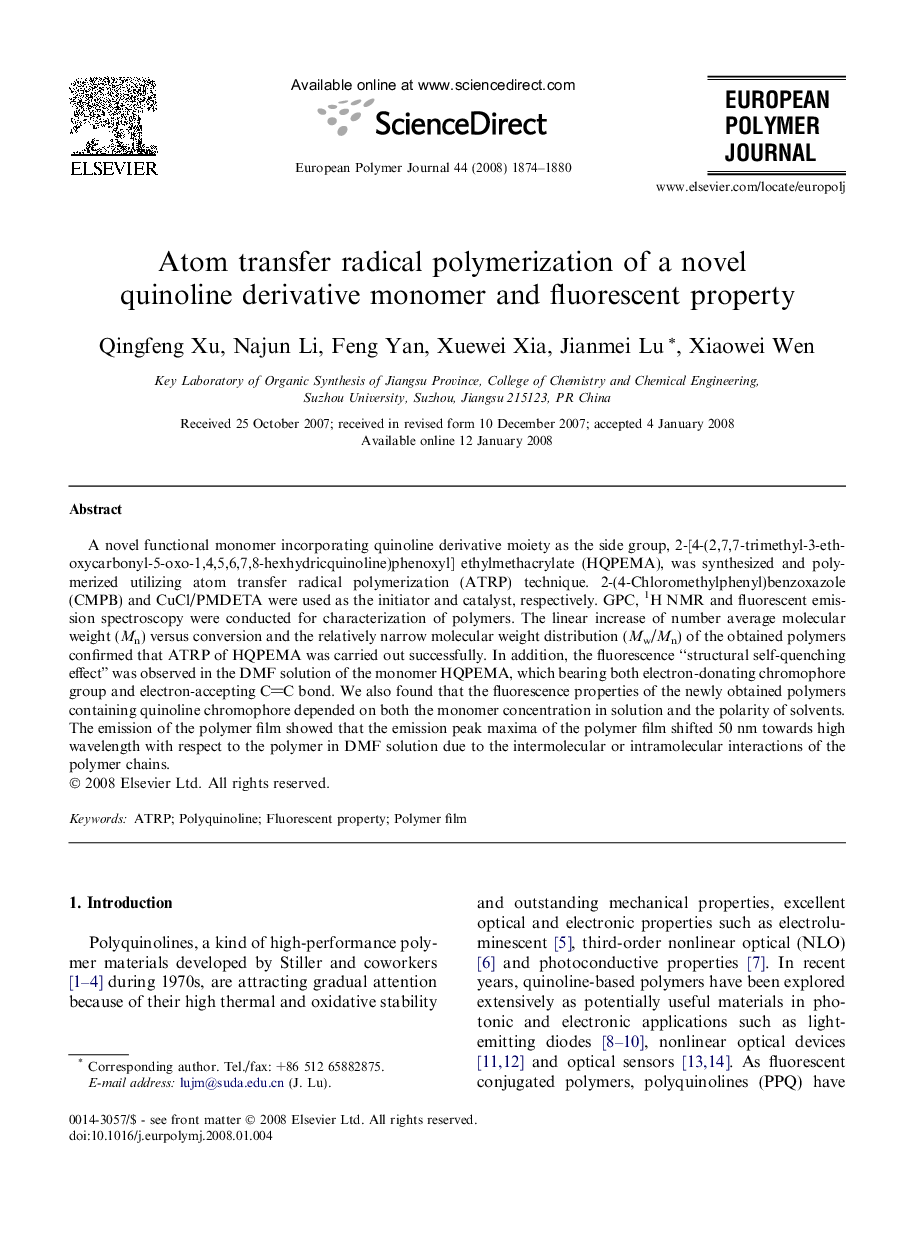| Article ID | Journal | Published Year | Pages | File Type |
|---|---|---|---|---|
| 1401032 | European Polymer Journal | 2008 | 7 Pages |
A novel functional monomer incorporating quinoline derivative moiety as the side group, 2-[4-(2,7,7-trimethyl-3-ethoxycarbonyl-5-oxo-1,4,5,6,7,8-hexhydricquinoline)phenoxyl] ethylmethacrylate (HQPEMA), was synthesized and polymerized utilizing atom transfer radical polymerization (ATRP) technique. 2-(4-Chloromethylphenyl)benzoxazole (CMPB) and CuCl/PMDETA were used as the initiator and catalyst, respectively. GPC, 1H NMR and fluorescent emission spectroscopy were conducted for characterization of polymers. The linear increase of number average molecular weight (Mn) versus conversion and the relatively narrow molecular weight distribution (Mw/Mn) of the obtained polymers confirmed that ATRP of HQPEMA was carried out successfully. In addition, the fluorescence “structural self-quenching effect” was observed in the DMF solution of the monomer HQPEMA, which bearing both electron-donating chromophore group and electron-accepting CC bond. We also found that the fluorescence properties of the newly obtained polymers containing quinoline chromophore depended on both the monomer concentration in solution and the polarity of solvents. The emission of the polymer film showed that the emission peak maxima of the polymer film shifted 50 nm towards high wavelength with respect to the polymer in DMF solution due to the intermolecular or intramolecular interactions of the polymer chains.
